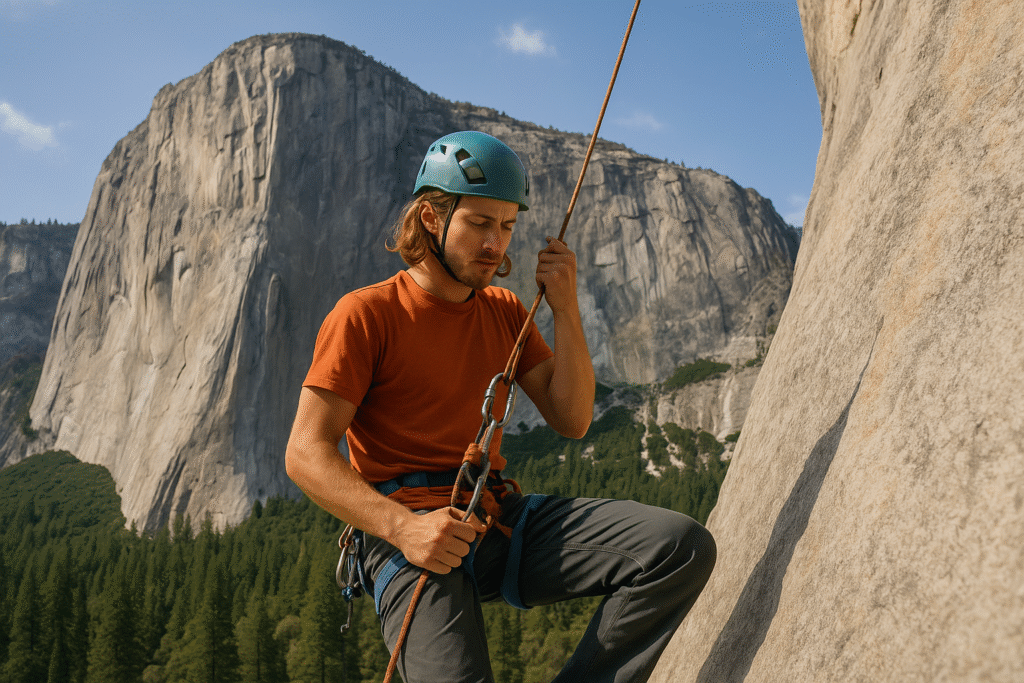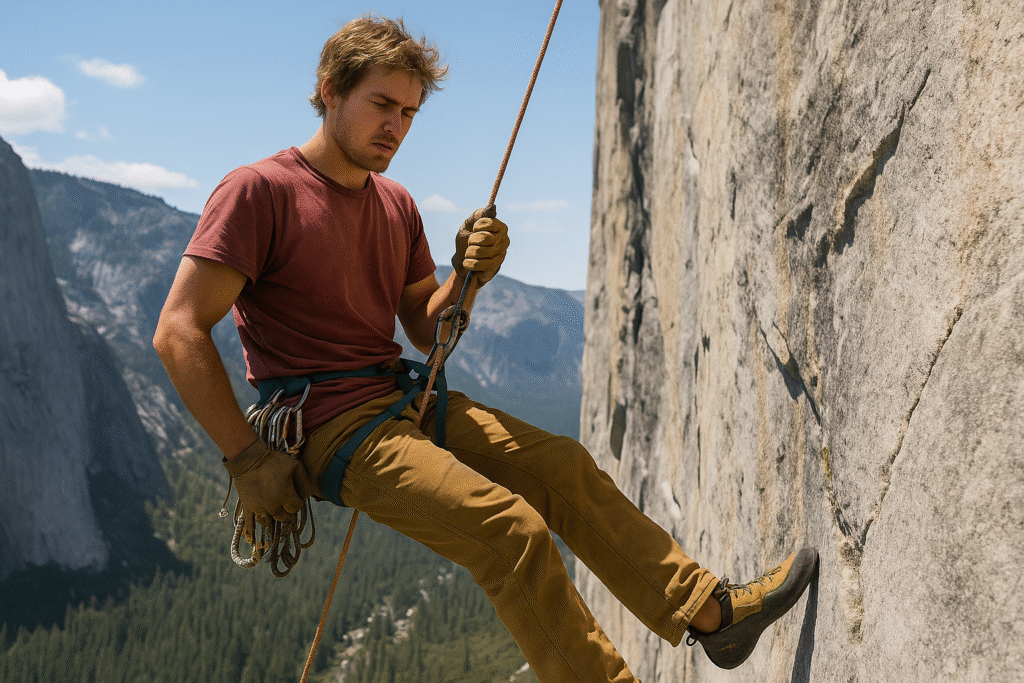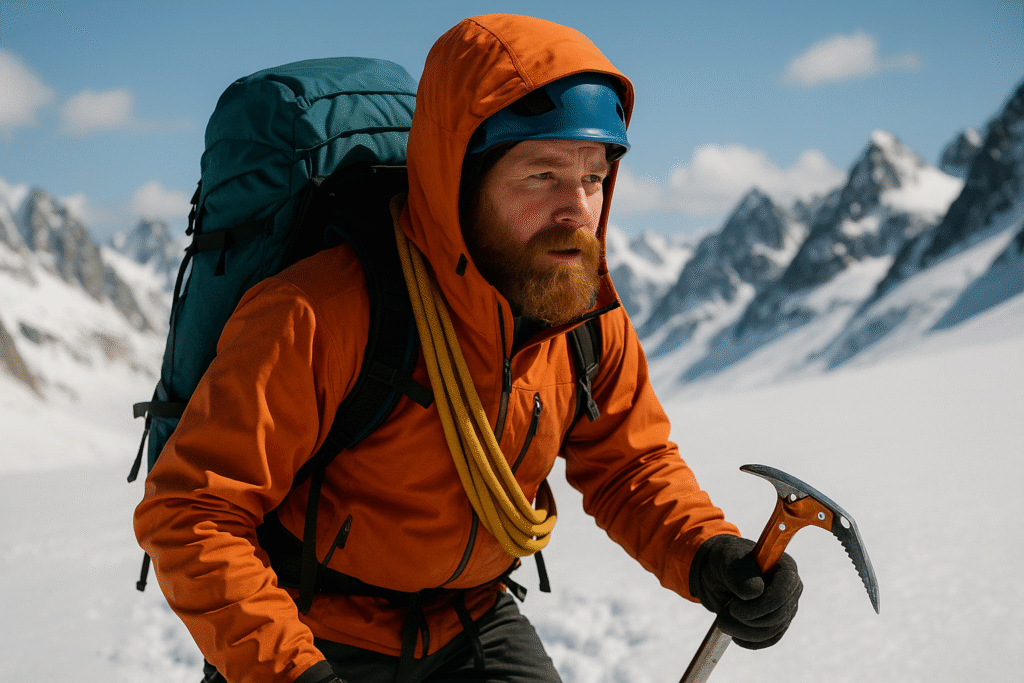Balin Miller Death: This long-read explains the tragic fall of rising Alaskan climber Balin Miller on Yosemite’s El Capitan, summarizes what reporters and park officials have confirmed, places the accident in climbing context, and offers evidence-based safety takeaways for big-wall climbers.
1) The headline facts — who, where, how (Balin Miller Death)
Balin Miller, a 23-year-old climber from Alaska who’d recently gained attention for bold solo ascents, died on Oct. 1, 2025 after a fall from El Capitan in Yosemite National Park. Multiple reputable outlets report that Miller was on the Sea of Dreams route and was rappelling near the top to retrieve gear when he apparently rappelled off the end of his rope and fell. His mother confirmed his death, and the National Park Service said rangers responded and that the incident is under investigation.
2) Who was Balin Miller? (short profile)
Miller was a widely admired young alpinist known within the climbing community for fast, independent ascents in Alaska, the Canadian Rockies, and Patagonia. He had earned a reputation for technical boldness (including a noted solo of Denali’s Slovak Direct earlier in 2025) and was also known to livestream parts of his trips and maintain a distinctive basecamp presence that fans nicknamed the “orange tent guy.” Tributes from climbers and friends emphasize his skill, optimism, and grassroots approach to mountaineering.
3) Exactly what appears to have happened (what reporters say)
According to eyewitness reports, friends’ postings and multiple news outlets, Miller had completed the final pitches of Sea of Dreams and was rappelling to retrieve a stuck haul bag when the fatal misstep occurred. The most consistent account in the reporting is that Miller unintentionally rappelled past the end of his rope (a common but catastrophic mistake when a stopper knot is missing or the rope length is misjudged) and fell to his death. Several outlets note the event was partially captured on a livestream. Authorities are investigating the specific sequence of events.
Note: News coverage understandably includes detail and witness accounts; official conclusions will come only after the park’s investigation and any released incident reports. Treat social-media clips and early witness statements as provisional until corroborated by investigators.

4) Why this kind of accident happens (technical explanation)
Rappelling off the end of a rope is a known hazard in single- and multi-pitch climbing. Common contributing factors include:
- miscounting rope length or using a rope too short for the rappel,
- failing to tie a stopper (figure-eight or overhand) knot at the free end,
- using an unfamiliar rigging system (left-right ends confusing), or
- trying to free a stuck bag or knot while in a precarious or low-visibility position.
When climbers rappel off the live end with no knot or backup anchor, there is nothing to stop the descent once the anchor runs out — a fall that is often unsurvivable on long big-wall faces like El Capitan. The climbing community recognizes these errors as preventable but tragically recurrent when routine checks are skipped under fatigue or hurry.
5) The route and terrain: what is “Sea of Dreams” and why El Capitan is dangerous
El Capitan is a ~3,000-foot (≈915 m) granite monolith in Yosemite Valley and attracts big-wall climbers from around the world. “Sea of Dreams” is one of many aid and mixed lines up the face known for complex aid climbs and sections where gear can get stuck; retrieving haul bags or negotiating tight terrain is a common part of descending/bag recovery. The exposure (sheer vertical drop), variable protection, and multi-day nature of big-wall climbs substantially increase risk if a rigging or rope mistake occurs. Yosemite’s climbing pages and guides stress that big-wall climbs carry inherent risk and that climbers must be self-reliant.
6) Livestreaming, social media and modern climbing culture
Miller had streamed parts of his climb in the days prior and had built a following online. Several outlets report that spectators watching the livestream witnessed the fall, which has intensified public attention. The intersection of livestreaming and high-risk activities raises complex ethical and safety questions: live audiences can encourage risk normalization, delay rescue notifications, and spread raw, traumatizing footage widely. Experts and park officials generally urge that critical incidents should be handled via official channels and that public sharing of disturbing livestreams can be harmful to victims’ families and bystanders.

7) Response, investigation and what authorities have said
Park rangers and emergency personnel responded to the scene; the National Park Service confirmed it is investigating the incident and that rescue personnel were on site. Yosemite’s public resources emphasize that rescue is not guaranteed and that climbers assume the responsibility for their safety. Officials typically compile incident reports after such events; those reports — when released — provide the most reliable reconstruction of what happened. As of Oct 3, 2025, the investigation was ongoing and the family had publicly confirmed Miller’s death.
8) Community reaction and tributes
Tributes poured in swiftly from fellow climbers, climbing organizations and social-media followers. Many remember Miller as an inspiring young athlete, describing his energy, skill and the mentorship he provided to peers. The climbing press has emphasized mourning while also using the moment to press for safer practices and broader conversations about risk management on big walls.

9) Safety lessons — practical, checklist-style takeaways for big-wall climbers
This is the hard but necessary part: many climbing accidents are avoidable with discipline and redundancy. Below is a concise checklist that climbers — especially those attempting single- or light-support big-wall soloing — should treat as non-negotiable.
Pre-rappel & rope management checklist
- Confirm rope length vs. expected rappel length with margin: measure before committing.
- Tie a visible stopper knot (overhand on a bight or figure-eight) in the free end of every rope used for a rappel.
- Use a redundant anchor when possible — build a backup anchor before committing to unsupported work.
- Communicate clearly on multisystem setups; call rope end status and knot checks aloud with any partner(s).
- If retrieving stuck gear, build a safe work position or lower to a secure stance rather than making a marginal unprotected move.
- When rope soloing, double-check configuration and consider a second backup system (prusik, fixed backup) — treat soloing as higher risk and prepare accordingly.
- Avoid high-risk maneuvers late in the day when fatigue, light, and attention decline — fatigue is a common root cause.
- If livestreaming, designate an off-wall partner or responsible viewer to contact emergency services immediately if anything goes wrong; never assume the audience will act.
How to follow the story responsibly (and what to avoid)
- Follow reputable outlets (AP, LA Times, Washington Post, local outlets with reporters on site) for updates and official statements.
- Avoid sharing graphic or unverified livestream clips. These are traumatic for families and can impede respectful reporting.
- Wait for the park’s incident report before drawing firm conclusions about cause or sequence. Early witness accounts are useful but sometimes incomplete or incorrect.
Final thoughts
The climbing community has lost a promising young talent. Balin Miller’s death is a solemn reminder that even elite skill and experience can be undone by small mistakes in unforgiving environments. This is a moment for respectful mourning, careful investigation, and renewed attention to proven safety practices that save lives on big walls.
Verified sources
(These are the primary news reports and official pages used to prepare this article. Click to read the original reporting and official guidance.)
- Associated Press — Alaskan climbing star dies in fall from Yosemite’s El Capitan. (AP News)
- Los Angeles Times — Climber dies in fall from Yosemite’s El Capitan during livestream. (Los Angeles Times)
- The Guardian — Emerging climbing star Balin Miller, 23, dies in fall from El Capitan. (The Guardian)
Disclaimer
This article is informational and based on reporting from reputable news organizations and official National Park Service guidance as of Oct 3, 2025. TrenBuzz is not conducting a legal or forensic investigation; final incident determinations are the responsibility of Yosemite National Park and related authorities. We avoid sensational detail out of respect for the deceased and their loved ones — readers seeking full incident reports should consult official park releases and authorized news reporting.
